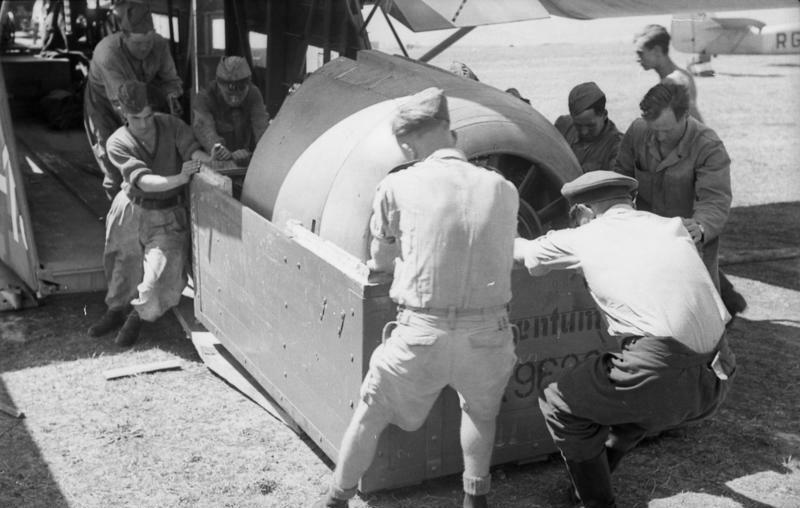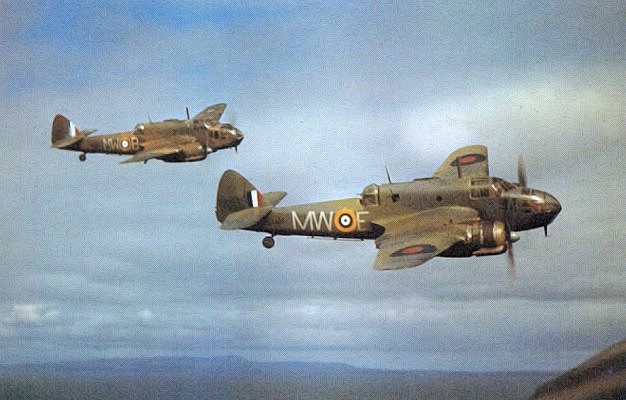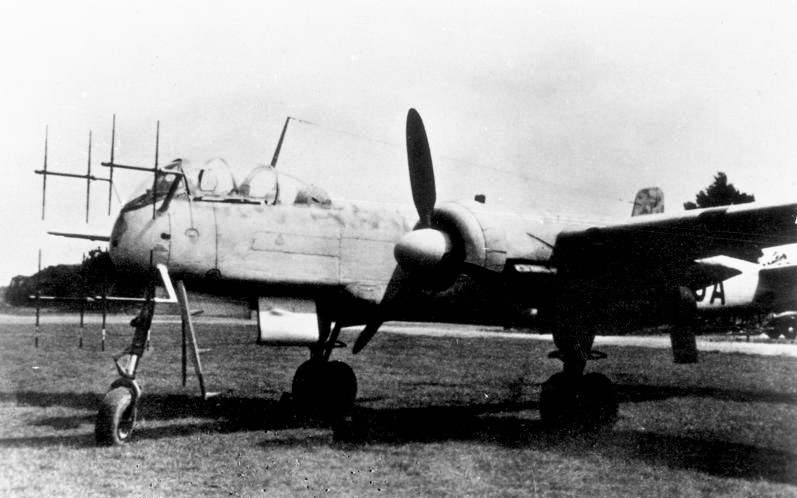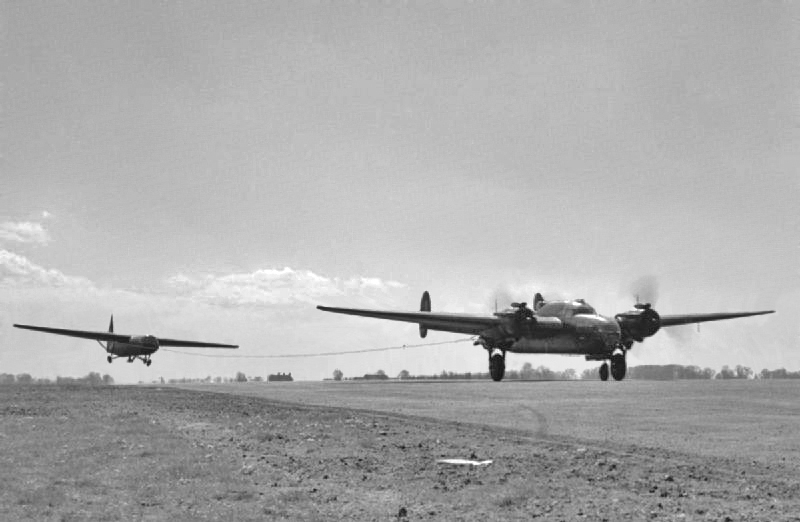|
Power-egg
A power-egg is a complete "unitized" modular engine installation, consisting of engine and all ancillary equipment, which can be swapped between suitably designed equipment, with standardised quick-changing attachment points and connectors. In aircraft so designed the power-egg is typically removed before mean time to failure is reached and a fresh one installed, the removed engine then being sent for maintenance. Spare power-eggs may be stored in sealed containers, to be opened when needed. The power-egg or ''Kraftei'' format was used in some German Second World War era aircraft, particularly for twin or multi-engined airframe designs. It existed in two differing formats – the initial ''Motoranlage'' format which used some specialized added components depending on what airframe it was meant for use on, and the ''Triebwerksanlage'' format, a more complete unitization format usually including exhaust and oil cooling systems. Applications Germany Inline and radial engines w ... [...More Info...] [...Related Items...] OR: [Wikipedia] [Google] [Baidu] |
Bristol Beaufighter
The Bristol Type 156 Beaufighter (often called the Beau) is a British Multirole combat aircraft, multi-role aircraft developed during the Second World War by the Bristol Aeroplane Company. It was originally conceived as a heavy fighter variant of the Bristol Beaufort torpedo bomber. The Beaufighter proved to be an effective night fighter, which came into service with the Royal Air Force (RAF) during the Battle of Britain, its large size allowing it to carry heavy armament and early AI Mark IV radar, airborne interception radar without major performance penalties. The Beaufighter was used in many roles; receiving the nicknames ''Rockbeau'' for its use as a rocket-armed attack aircraft, ground attack aircraft and ''Torbeau'' as a torpedo bomber against Axis powers, Axis shipping, in which it replaced the Bristol Beaufort, Beaufort. In later operations, it served mainly as a maritime strike/ground attack aircraft, RAF Coastal Command having operated the largest number of Beaufigh ... [...More Info...] [...Related Items...] OR: [Wikipedia] [Google] [Baidu] |
Heinkel He 219
The Heinkel He 219 ''Uhu'' ("Eagle-Owl") is a night fighter that served with the German Luftwaffe in the later stages of World War II. A relatively sophisticated design, the He 219 possessed a variety of innovations, including Lichtenstein SN-2 advanced VHF-band intercept radar, also used on the Ju 88G and Bf 110G night fighters. It was also the first operational military aircraft to be equipped with ejection seats and the first operational German World War II-era aircraft with tricycle landing gear. Had the ''Uhu'' been available in quantity, it might have had a significant effect on the strategic night bombing offensive of the Royal Air Force; however, only 294 of all models were built by the end of the war and these saw only limited service.Boyne 1997, p. 330. Ernst-Wilhelm Modrow was the leading night fighter ace on the He 219. Modrow was credited with 33 of his 34 night air victories on the type. Design and development Development and production of the He 219 was protr ... [...More Info...] [...Related Items...] OR: [Wikipedia] [Google] [Baidu] |
BMW 801
The BMW 801 was a powerful German air-cooled 14-cylinder-radial aircraft engine built by BMW and used in a number of German Luftwaffe aircraft of World War II. Production versions of the twin-row engine generated between 1,560 and 2,000 PS (1,540–1,970 hp, or 1,150–1,470 kW). It was the most produced radial engine of Germany in World War II with more than 61,000 built. The 801 was originally intended to replace existing radial types in German transport and utility aircraft. At the time, it was widely agreed among European designers that an inline engine was a requirement for high performance designs due to its smaller frontal area and resulting lower drag. Kurt Tank successfully fitted a BMW 801 to a new fighter design he was working on, and as a result the 801 became best known as the power plant for the famous Focke-Wulf Fw 190. The BMW 801 radial also pioneered the use of what would today be designated an engine control unit: its ''Kommandogerät'' engine manag ... [...More Info...] [...Related Items...] OR: [Wikipedia] [Google] [Baidu] |
Bundesarchiv Bild 101I-332-3096-12, Russland, Entladen Eines Lastenseglers Go 242
, type = Archive , seal = , seal_size = , seal_caption = , seal_alt = , logo = Bundesarchiv-Logo.svg , logo_size = , logo_caption = , logo_alt = , image = Bundesarchiv Koblenz.jpg , image_caption = The Federal Archives in Koblenz , image_alt = , formed = , preceding1 = , preceding2 = , dissolved = , superseding1 = , superseding2 = , agency_type = , jurisdiction = , status = Active , headquarters = PotsdamerStraße156075Koblenz , coordinates = , motto = , employees = , budget = million () , chief1_name = Michael Hollmann , chief1_position = President of the Federal Archives , chief2_name = Dr. Andrea Hänger , chief2_position ... [...More Info...] [...Related Items...] OR: [Wikipedia] [Google] [Baidu] |
Junkers Ju 388
The Junkers Ju 388 '' Störtebeker'' is a World War II German ''Luftwaffe'' multi-role aircraft based on the Ju 88 airframe by way of the Ju 188. It differed from its predecessors in being intended for high altitude operation, with design features such as a pressurized cockpit for its crew. The Ju 388 was introduced very late in the war, and production problems along with the deteriorating war conditions meant that few were built. Background The ''Reichsluftfahrtministerium'' (RLM), the Reich Aviation Ministry, first learned of the American Boeing B-29 Superfortress heavy bomber in late 1942. Serious concerns as to B-29 capability developed in early 1944, when YB-29 "Hobo Queen" made a well-publicised appearance at RAF Bovingdon, which had been cryptically hinted-at in an American-published ''Sternenbanner'' German language propaganda leaflet from Leap Year Day in 1944, meant to be circulated within the Reich. The performance estimates of this aircraft were a cause for great u ... [...More Info...] [...Related Items...] OR: [Wikipedia] [Google] [Baidu] |
Short Stirling
The Short Stirling was a British four-engined heavy bomber of the Second World War. It has the distinction of being the first four-engined bomber to be introduced into service with the Royal Air Force (RAF). The Stirling was designed during the late 1930s by Short Brothers to conform with the requirements laid out in Air Ministry Specification B.12/36. Prior to this, the RAF had been primarily interested in developing increasingly capable twin-engined bombers, but had been persuaded to investigate a prospective four-engined bomber as a result of promising foreign developments in the field. Out of the submissions made to the specification, Supermarine proposed the Type 317, which was viewed as the favourite, whereas Short's submission, named the S.29, was selected as an alternative. When the preferred Type 317 had to be abandoned, the S.29, which later received the name Stirling, proceeded to production. In early 1941, the Stirling entered squadron service. During its use as ... [...More Info...] [...Related Items...] OR: [Wikipedia] [Google] [Baidu] |
Vickers Wellington
The Vickers Wellington was a British twin-engined, long-range medium bomber. It was designed during the mid-1930s at Brooklands in Weybridge, Surrey. Led by Vickers-Armstrongs' chief designer Rex Pierson; a key feature of the aircraft is its geodetic airframe fuselage structure, which was principally designed by Barnes Wallis. Development had been started in response to Air Ministry Specification B.9/32, issued in the middle of 1932, for a bomber for the Royal Air Force. This specification called for a twin-engined day bomber capable of delivering higher performance than any previous design. Other aircraft developed to the same specification include the Armstrong Whitworth Whitley and the Handley Page Hampden. During the development process, performance requirements such as for the tare weight changed substantially, and the engine used was not the one originally intended. The Wellington was used as a night bomber in the early years of the Second World War, performing a ... [...More Info...] [...Related Items...] OR: [Wikipedia] [Google] [Baidu] |
Armstrong Whitworth Albemarle
The Armstrong Whitworth A.W.41 Albemarle was a twin-engine transport aircraft developed by the British aircraft manufacturer Armstrong Whitworth and primarily produced by A.W. Hawksley Ltd, a subsidiary of the Gloster Aircraft Company. It was one of many aircraft which entered service with the Royal Air Force (RAF) during the Second World War. The Albemarle had been originally designed as a medium bomber to fulfil Specification B.9/38 for a aircraft that could be built of wood and metal without using any light alloys; however, military planners decided to deemphasise the bomber role in favour of aerial reconnaissance and transport missions, leading to the aircraft being extensively redesigned mid-development. Performing its maiden flight on 20 March 1940, its entry to service was delayed by the redesign effort, thus the first RAF squadron to operate the Albemarle, No. 295 at RAF Harwell, did not receive the type in quantity until January 1943. As superior bombers, such as th ... [...More Info...] [...Related Items...] OR: [Wikipedia] [Google] [Baidu] |
Bristol Hercules
The Bristol Hercules is a 14-cylinder two-row radial aircraft engine designed by Sir Roy Fedden and produced by the Bristol Engine Company starting in 1939. It was the most numerous of their single sleeve valve ( Burt-McCollum, or Argyll, type) designs, powering many aircraft in the mid- World War II timeframe. The Hercules powered a number of aircraft types, including Bristol's own Beaufighter heavy fighter design, although it was more commonly used on bombers. The Hercules also saw use in civilian designs, culminating in the 735 and 737 engines for such as the Handley Page Hastings C1 and C3 and Bristol Freighter. The design was also licensed for production in France by SNECMA. Design and development Shortly after the end of World War I, the Shell company, Asiatic Petroleum, commissioned Harry Ricardo to investigate problems of fuel and engines. His book was published in 1923 as “The Internal Combustion Engine”. Ricardo postulated that the days of the poppet va ... [...More Info...] [...Related Items...] OR: [Wikipedia] [Google] [Baidu] |
Bristol Aeroplane Company
The Bristol Aeroplane Company, originally the British and Colonial Aeroplane Company, was both one of the first and one of the most important British aviation companies, designing and manufacturing both airframes and aircraft engines. Notable aircraft produced by the company include the 'Boxkite', the Bristol Fighter, the Bulldog, the Blenheim, the Beaufighter, and the Britannia, and much of the preliminary work which led to Concorde was carried out by the company. In 1956 its major operations were split into Bristol Aircraft and Bristol Aero Engines. In 1959, Bristol Aircraft merged with several major British aircraft companies to form the British Aircraft Corporation (BAC) and Bristol Aero Engines merged with Armstrong Siddeley to form Bristol Siddeley. BAC went on to become a founding component of the nationalised British Aerospace, now BAE Systems. Bristol Siddeley was purchased by Rolls-Royce in 1966, who continued to develop and market Bristol-designed engines. ... [...More Info...] [...Related Items...] OR: [Wikipedia] [Google] [Baidu] |
Society Of British Aerospace Companies
The Society of British Aerospace Companies, formerly Society of British Aircraft Constructors, known as SBAC, was the UK's national trade association representing companies supplying civil air transport, aerospace defence, homeland security and space. As of October 2009 SBAC merged with the Defence Manufacturers Association and the Association of Police and Public Security Suppliers to form the ADS Group. The SBAC organises the Farnborough Airshow. Representation With its regional partners, SBAC represents over 2,600 companies, assisting them in developing new business globally, facilitating innovation and competitiveness and providing regulatory services in technical standards and accreditation. Inside the organisation is the British Aviation Group and the UK Space Agency. History Formation On 29 March 1915 a number of British aircraft manufacturers and industrialists met to arrange a standards body and production pooling system known as the Society of British Aircraft Co ... [...More Info...] [...Related Items...] OR: [Wikipedia] [Google] [Baidu] |







